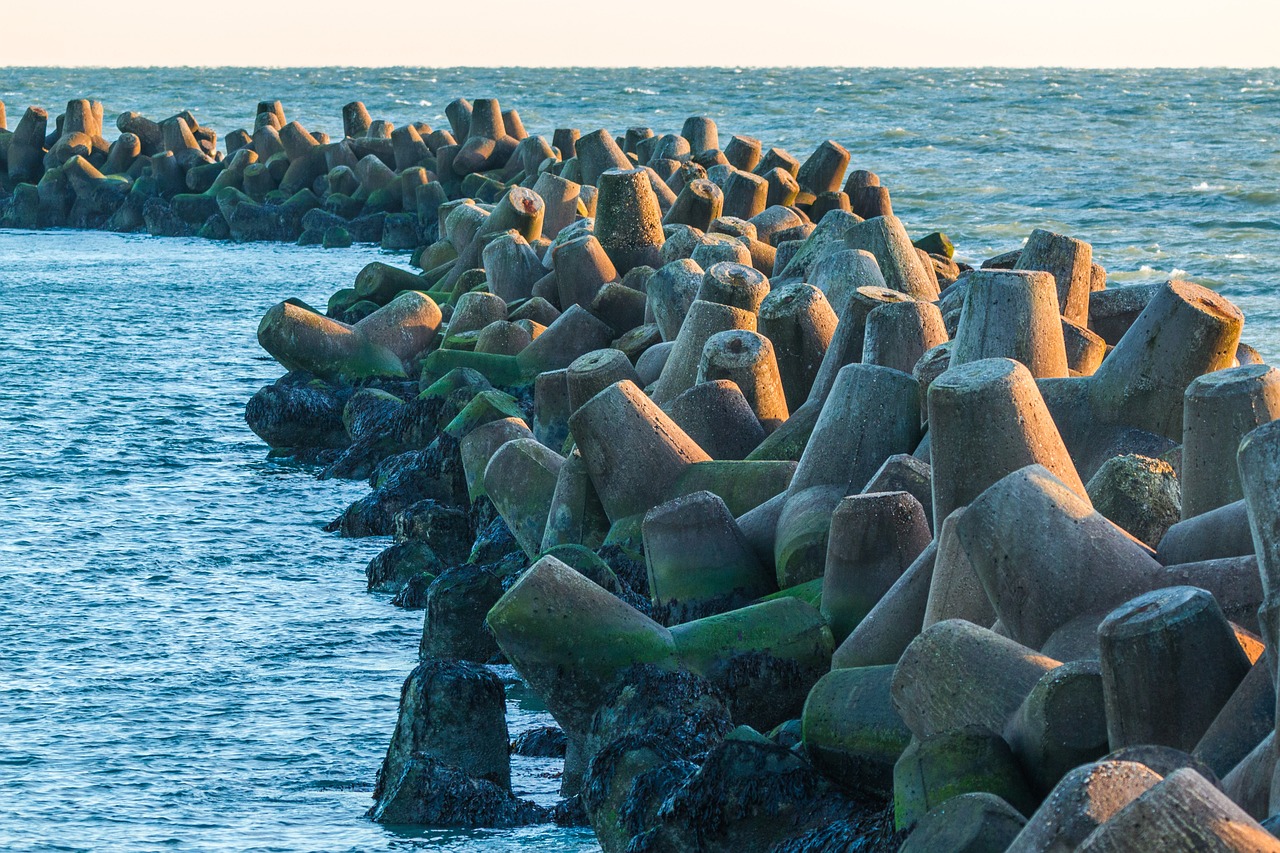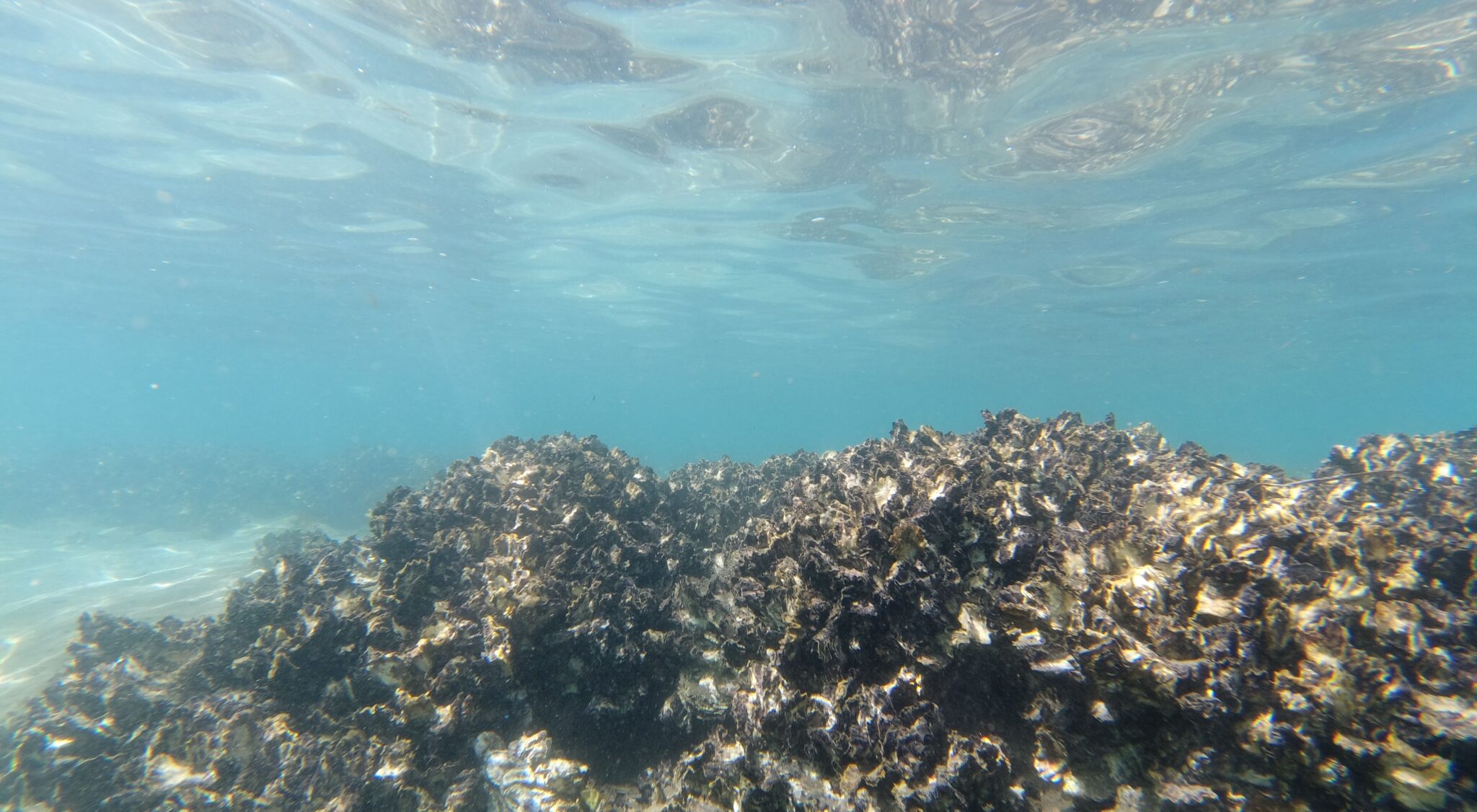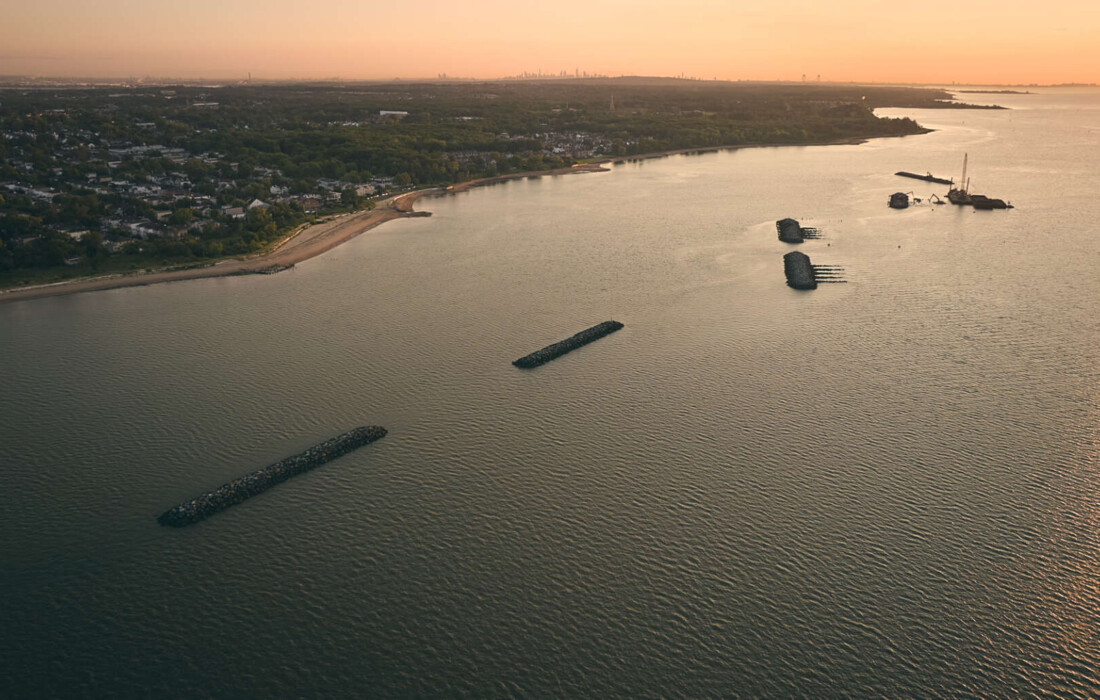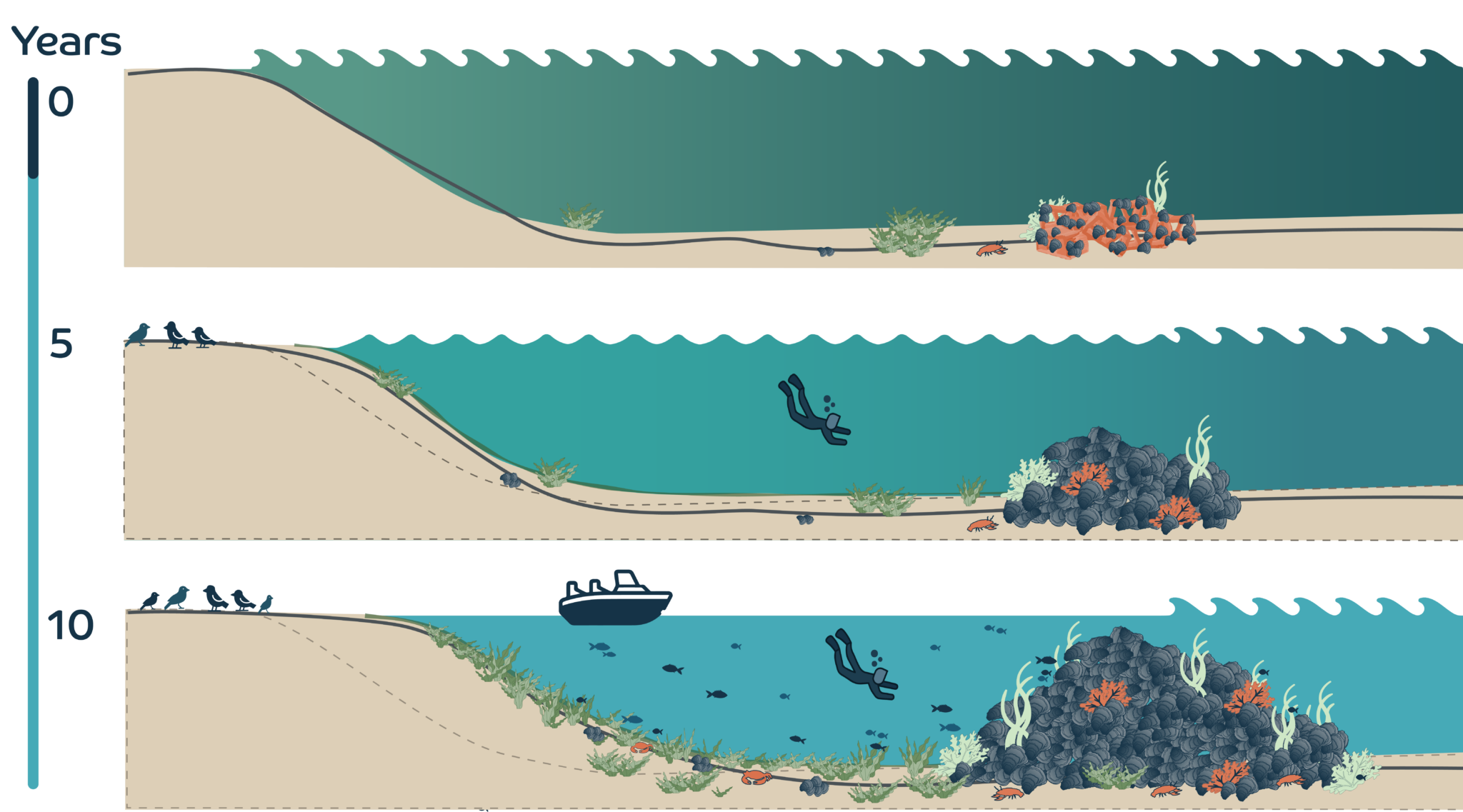As climate change intensifies, coastal regions around the world are facing increasing threats from rising sea levels, storm surges, and coastal erosion. Traditional artificial solutions like seawalls and breakwaters are often expensive, disruptive to marine habitats, and ultimately not sustainable in the long term.

At Oyster Heaven, we believe in turning to nature to support the best engineering solutions.
One of the most promising approaches we’ve identified is the regeneration of oyster reefs as living breakwaters to protect our coasts.
Living breakwaters are coastal protection structures designed to reduce wave energy and prevent shoreline erosion. Unlike traditional breakwaters, often made from concrete or stone which can be disruptive, and only focus on blocking waves, living breakwaters incorporate natural materials that encourage the growth of organisms like oysters, corals, and seagrasses to form a natural barrier.
These natural structures create a more resilient coastal ecosystem as they grow and expand, they are more durable and effective over time and add ecological value. They also stabilise sediment, filter water, and provide shelter for fish and other marine species. They truly are a win-win solution.
Oyster reefs have long played a crucial role in coastal ecosystems, not only as biodiversity hotspots but also as natural protectors against the forces of the ocean because they are themselves living breakwaters. The structures they form help reduce wave energy, stabilise shorelines, and prevent erosion.

Data from two oyster reef restoration projects in Mobile Bay, Alabama, show an estimated 51% to 90% reduction in wave height and 76% to 99% reduction in wave energy at the shore from reef restoration. (The Nature Conservancy)
So instead of creating artificial structures, oyster reefs are a great example of how natural systems are often the most effective solutions. They are not only a natural defence but can also lower the impact of storms and high tides on coastal areas.
Using natural systems instead of artificial structures offers a resilient, self-sustaining and cost-effective solution for long-term coastal protection.
In Staten Island, New York, a successful oyster restoration project was developed to enhance coastal resilience after Hurricane Sandy in 2012.
The Living Breakwaters project, led by SCAPE Landscape Architecture in collaboration with the Billion Oyster Project, aimed to provide a sustainable alternative to traditional hard-engineering structures by constructing a series of offshore breakwaters made of natural materials, including restored oyster reefs to reduce the impact of future storms and slow down the erosion of the Tottenville shoreline.

Regenerating oyster reefs in strategic locations along vulnerable coastlines is a way of tackling multiple environmental challenges at once.
Oyster Heaven’s approach focuses on large-scale restoration projects that create resilient, natural barriers to protect against coastal erosion while simultaneously enhancing marine biodiversity and improving water quality. Furthermore, the reefs’ ability to trap sediments helps build up the seabed, which contributes to the natural rebuilding of coastlines.
This comes with additional benefits for the coastal communities and the tourism industry that can profit from the better conditions of the shore and the increase of livestock in the area.
What’s more, this practice can be combined with IMTA systems to support sustainable aquaculture practices.

By placing Mother Reefs – our specially designed clay bricks precharged with oyster spats- , we provide the ideal conditions for the oyster reef ecosystem to grow. This innovative method strengthens the resilience of the reef and ensures it evolves and grows as a living shoreline that can adapt to changing ocean conditions.